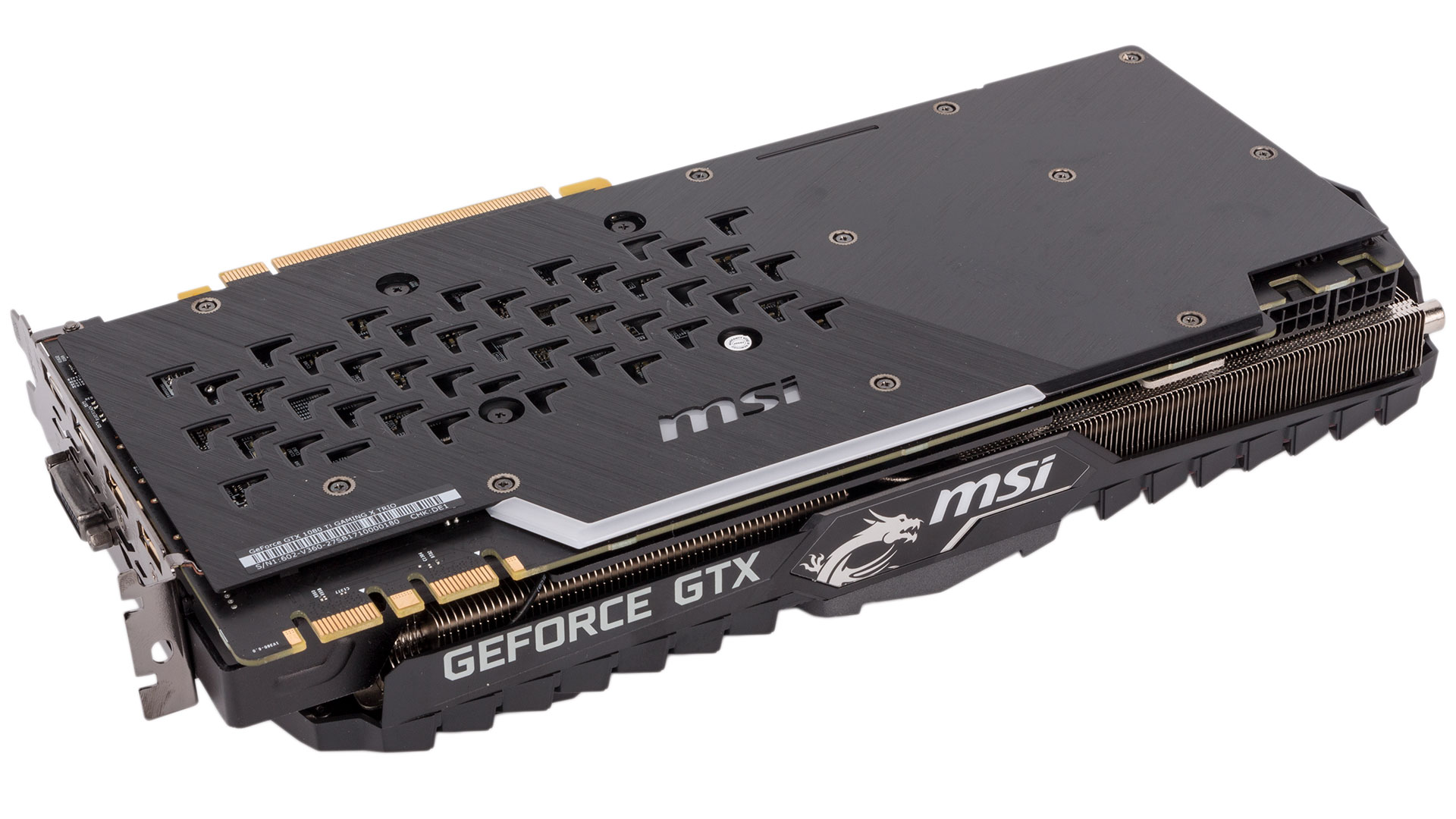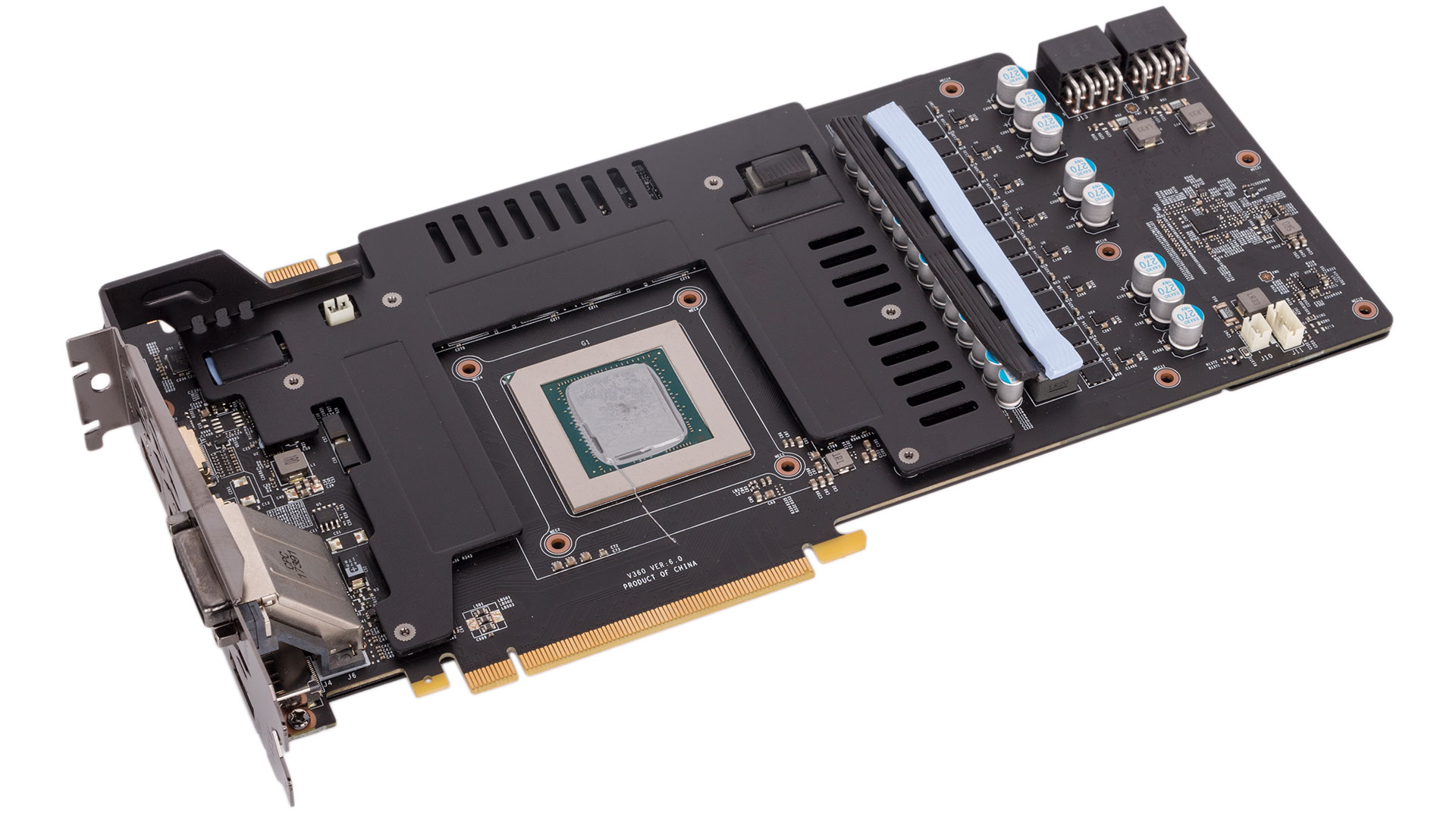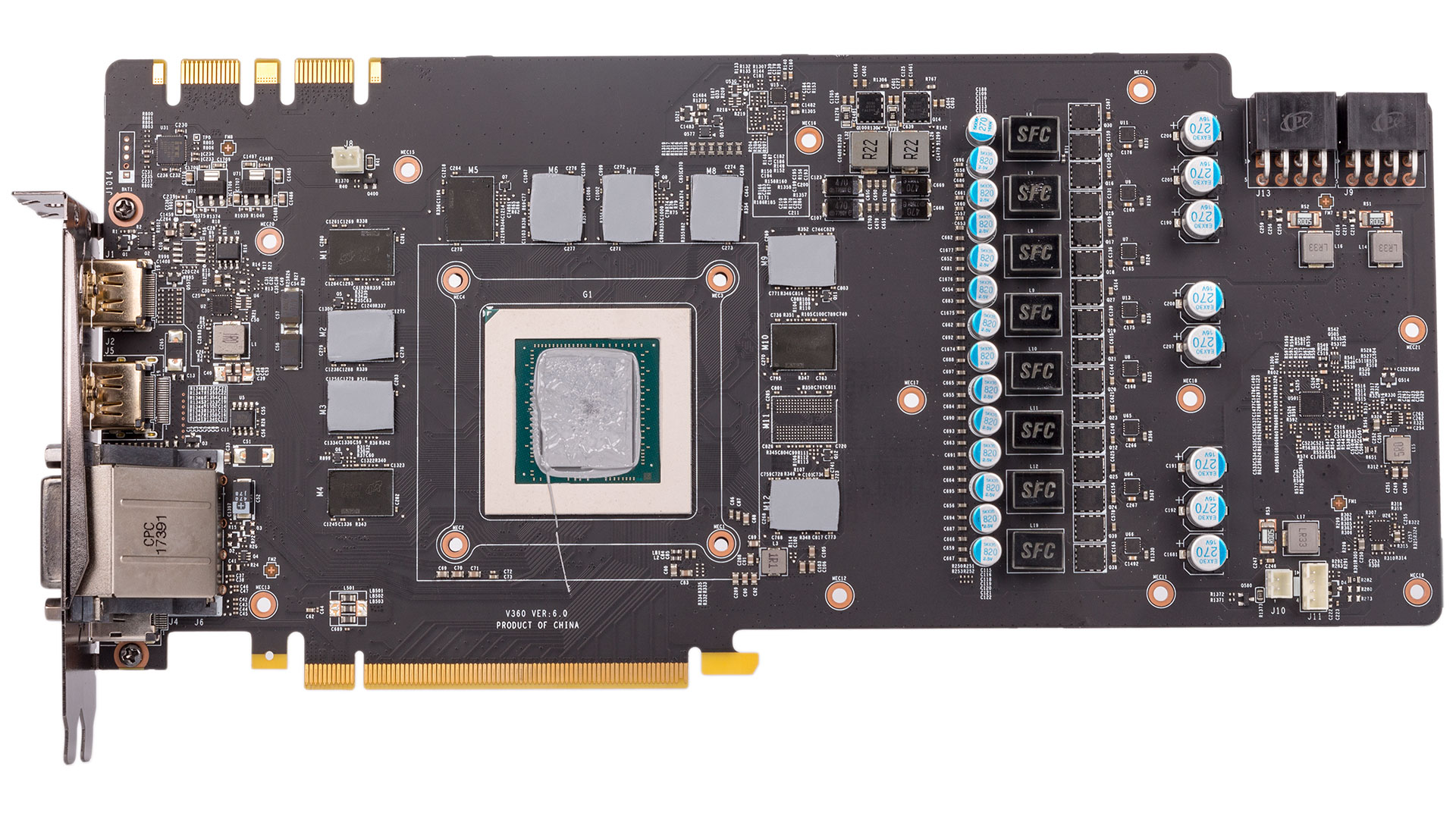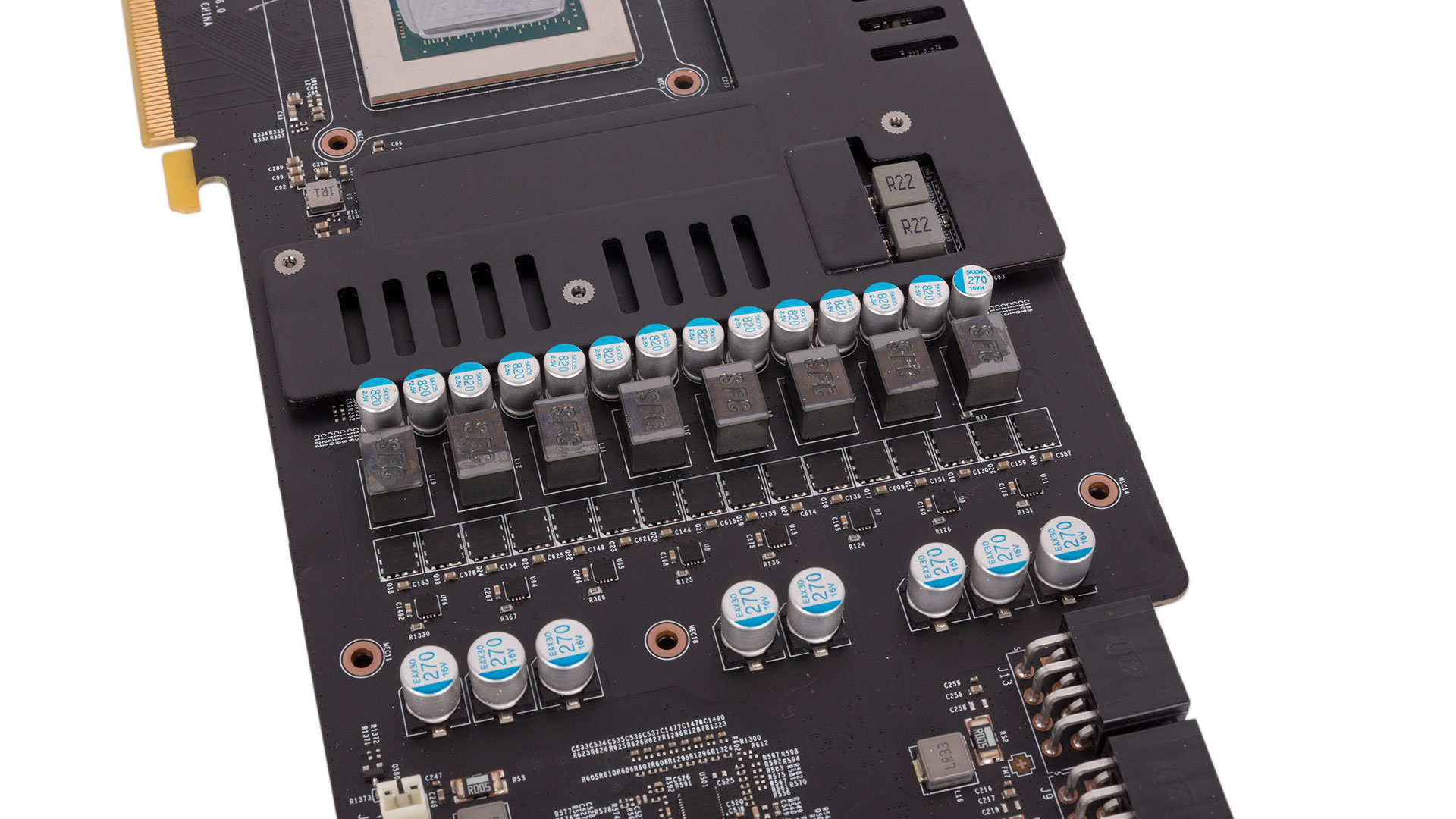Manufacturer: MSI
UK price (as reviewed): £753.98 (inc. VAT)
US price (as reviewed): $799.99(exc. tax)
With the GTX 1080 Ti having held the performance crown for some time now, manufacturers keep producing new SKUs to take advantage of how lucrative this end of the market is. With no real challenge from AMD in sight yet, this could continue for some time yet. With us today – and the first card to run the gauntlet of our new GPU test system and benchmarks – is the Gaming X Trio variant of the GTX 1080 Ti from MSI. The Gaming X cards have been a staple of MSI’s SKUs for a while now, but the Trio, as the name suggests, adds a larger cooler with a third fan, likely in response to designs like the Asus Strix. Whether the Trio will be introduced to lower-end parts remains to be seen, but for now let’s see what it means for the GTX 1080 Ti.

As we’d expect, the GTX 1080 Ti Gaming X Trio is factory overclocked, with the core running at 1,544MHz (1,657MHz boost) out of the box and tweakable through software to a higher OC Mode of 1,569MHz (1,683MHz boost) that also ups the memory from 11Gbps to 11.1Gbps. These are fairly middle of the road speeds as far as the wider market goes, but this isn’t MSI’s top-tier air-cooled SKU; that’s a spot reserved for the Lightning cards.

Black and grey dominate the aesthetic of the front fascia, although MSI still insists on including red LED backlit strips even in this age of RGB dominance. The backplate, however, has a new RGB illuminated section comprising multiple LEDs and including the outer strip and the MSI logo. All card LEDs can be controlled through MSI Mystic Light, and those on the front are further divided into two distinct sections: left and right. There are many effects available, and while the front LEDs being red only may irk some, you can easily disable them if they clash with the colour scheme you have in mind. The RGB section is well managed and bright, so it should satisfy most.

At 325mm long, 140mm tall, and occupying more than two slots (effectively triple-slot), the GTX 1080 Ti Gaming X Trio is a beast and not suited to cases with space limitations. Just under 1.5kg in weight, the card also risks straining PCIe slots; in recognition of this, MSI includes a metal support bracket in the box.

A common approach to display outputs on these cards it to replace one of the three DisplayPorts dictated by the reference specifications by a HDMI port so that VR users can leave both their headset and a HDMI-based display connected together. This is what MSI has done, so you have two each of the different ports as well as a dual-link DVI-D connector.

MSI uses a pair of eight-pin PCIe power headers for this card, meaning it has access to up to 375W in total, which will be plenty.

MSI’s cooling strategy here is multi-faceted. A metal contact plate is secured to the card to draw away heat from the memory modules (all are fully covered) and a few other components. The bulk of cooling, however, is handled of course by the humongous heatsink, which connects to the GPU via a large copper baseplate. This feeds six heat pipes (four 6mm, two 8mm) that are squared off where they meet the baseplate for additional heat transfer, and these weave their way through the large fin stack. The fins are ‘wave-curved’ to give them more area through which to dissipate heat. Welded directly to this heatsink is a secondary one that takes care of the power management circuitry and VRMs via thermal pads. For the GPU, a ‘premium’ thermal compound is used. Of course, the card also has a backplate, and while this is mainly for aesthetics and PCB support, it will also dissipate some heat too.

The larger-than-usual card gives MSI room to include three fans – two large outer ones and one smaller middle one. All spin in the same direction and are 14-blade Torx 2.0 models with alternating fins (one dispersion fin for airflow acceleration, one traditional fin for pushing air down) and double ball bearings. The card is semi-passive as well (MSI calls this Zero Frozr), so whenever the GPU is below 60°C, the fans won’t spin at all.

The card takes advantage of an 8+2 phase power configuration that utilises MSI’s Military Class IV components that are subjected to stringent testing protocols.

Looking to improve value (if such a thing can be said to apply to a £750 card), MSI includes a 12-month X-Split Premium license with this card. This is perhaps less desirable than the current Asus offer of Assassin's Creed Origins, but ultimately it will depend on you.
MSI certainly appears to have ticked pretty much every box as far as a premium GPU goes. This will no doubt be a very fast card too, but let’s find out just how fast.
Specifications
- Graphics processor Nvidia GeForce GTX 1080 Ti, 1,544MHz (1,657MHz boost) (1,569MHz/1,683MHz in OC Mode)
- Pipeline 3,584 stream processors, 224 texture units, 88 ROPs
- Memory 11GB GDDR5X, 11Gbps effective (11.1Gbps effective in OC Mode)
- Bandwidth 484GB/s (488.4GB/s in OC Mode), 352-bit interface
- Compatibility DirectX 12, Vulcan, OpenGL 4.5
- Outputs 2 x DisplayPort 1.4, 1 x dual-link DVI-D, 2 x HDMI 2.0b
- Power connections 2 x 8-pin PCIe, top-mounted
- Size 325mm long, 140mm tall, triple-slot
- Warranty Three years

MSI MPG Velox 100R Chassis Review
October 14 2021 | 15:04









Want to comment? Please log in.